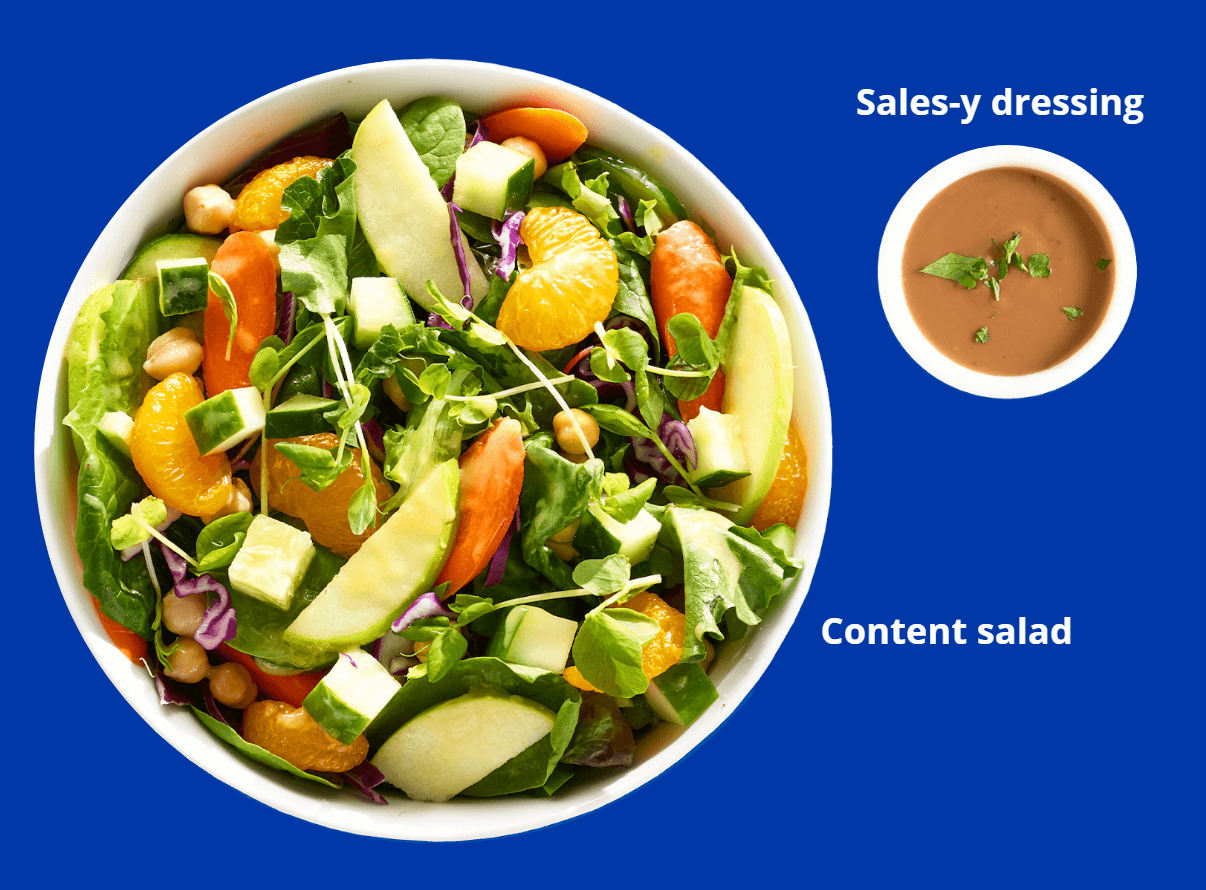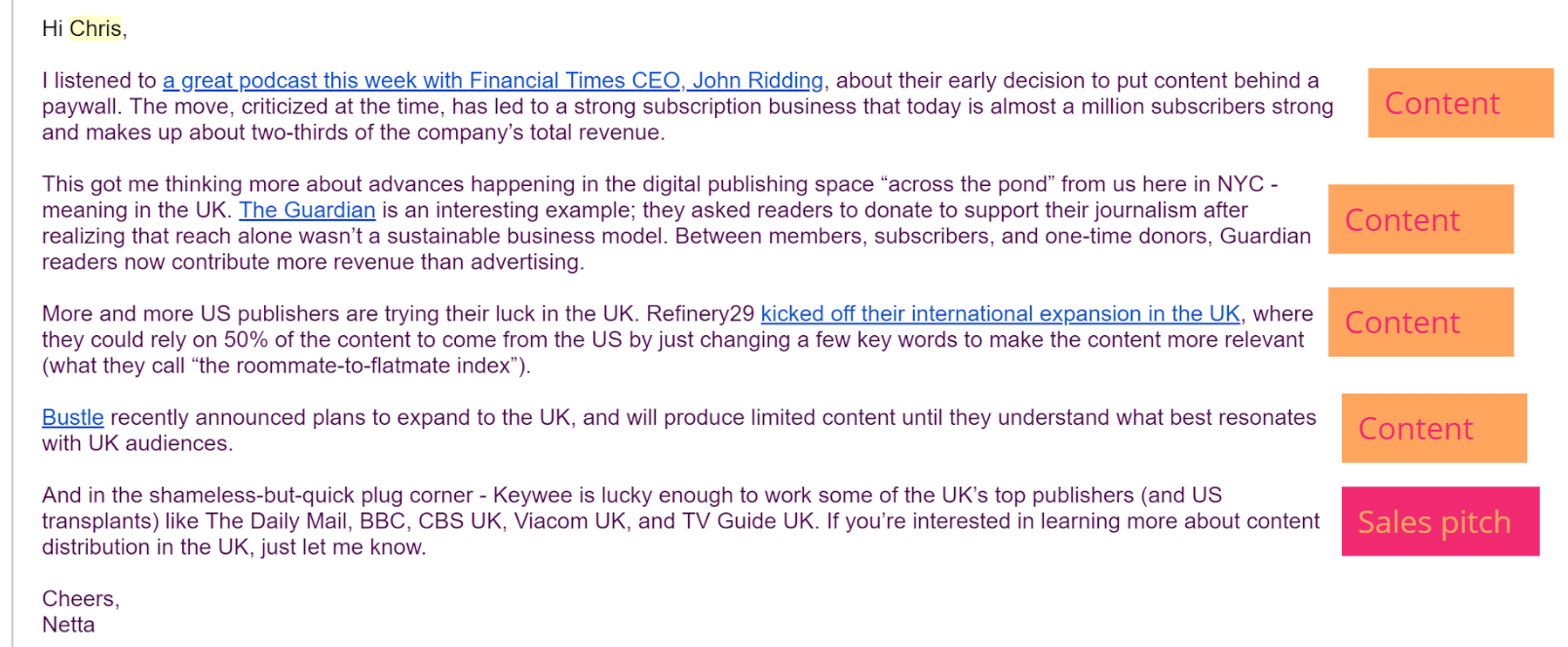* It’s not actually spam
“I don’t like cold emails”
“I hate spam”
“I’m uncomfortable reaching out to people I don’t know on LinkedIn”
I hear similar things from many Israeli startup CEOs. They are reluctant to or even disgusted by using cold emails to contact their target audience, even though these emails may eventually lead to a sales process.
My response? Let’s start with a short mental exercise…
You’re an Israeli startup CEO. Imagine one day you get an email from me with five articles about marketing challenges of Israeli startup CEOs, and how they dealt with them. You might get a bit annoyed about how I obtained your email address, but chances are you will read and appreciate the content.
The following month, you get an email from me inviting you to a breakfast with 20 other startup CEOs. After five emails along these lines, if I were to ask you to jump on a quick call to see if we can work together, you’ll probably agree – or at least explain why not. (By the way, this example roughly describes part of Blue Seedling’s marketing strategy. And it works.)
A real-life example: The industry content recap
We worked with one of our clients to create relevant, timely content for their audience – a combination of original articles, data analysis and industry trends, along with curated articles from industry experts. We emailed out this content every week.
In parallel, we built lists of relevant leads every week, and “invited” all new leads to join our content series. Here’s one of the responses we received:

And here are a couple more:



In the two+ years we’ve been running this program, it consistently brings in one new Sales Opportunity every two weeks on average. The number of negative responses we’ve received is negligible, and the opt-out rate is very low compared to industry benchmarks.
Why does it work?
Our philosophy: if your emails are relevant, well-targeted, and contain informative, valuable, non-sales-y content, people will love them. Over time, these emails contribute to building a brand that’s perceived as high-quality and educational. When your potential client is ready to buy a product in your category, they will be open to having a sales conversation with you, based on the goodwill you have created.
Here’s a personal story: I used to work for the world’s largest e-commerce company, named after a big river. In this company, email marketing opt-in was sacred. Sending emails to someone who didn’t explicitly subscribe to a mailing list was forbidden.
I used to believe the same thing: emailing someone who didn’t explicitly opt-in was spam and should never be done. Over the years, in conjunction with working with startups, my thinking has evolved. Not just because of the business value for the company, but mainly because of enthusiastic responses from the target audience, like the ones above.
Today, I believe in adding relevant leads to an email database and emailing them respectfully. As with many things in life, the Golden Rule applies: ask yourself, would you like to be added to this list? Would you enjoy getting similar emails?
By the way, the e-commerce company’s policy has evolved, as well. Today, there are circumstances when they would email people without explicit opt-in.
Note that it’s important that the emails include mostly juicy, nutritious content that is relevant to the audience, and any sales ask should be the “dressing.”

We recommend a ratio of 3-4 content emails for every email that’s more sales-y. Or within one email, 3-4 content paragraphs for every sales-y paragraph.
Example:

Wait, is it even legal to email people who haven’t opted-in to my mailing list?
Disclaimer: we’re not lawyers, and this post isn’t legal advice.
In the United States, it is legal to email people even without them registering to your list, as long as the email contains an unsubscribe link and your business’ physical mailing address. The relevant law is called CAN-SPAM (summary, full text).
The situation in Europe is more complicated since GDPR went into effect in May 2018. If you want to play it safe, avoid emailing European recipients who didn’t explicitly opt into your email lists.
OK, so I’ll email a lot of content – will it eventually help me sell?
Not always. But even if not, content will help your interactions with your audience and will contribute to building a strong brand and community.
The bottom line
An informative, well-targeted, non-sales-y email isn’t spam – it’s valuable content that you send for free (!) and don’t even expect people to thank you for (!!).
If you’re convinced and want to give this a shot, we’ll be publishing a post with a step-by-step guide soon. Sign up below to receive it.
* It’s not actually spam








